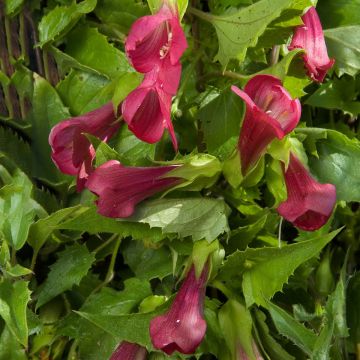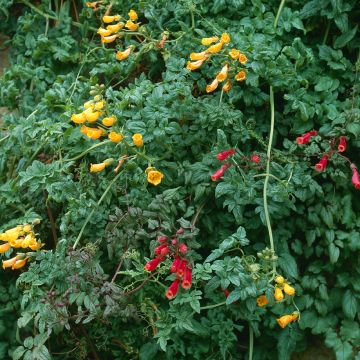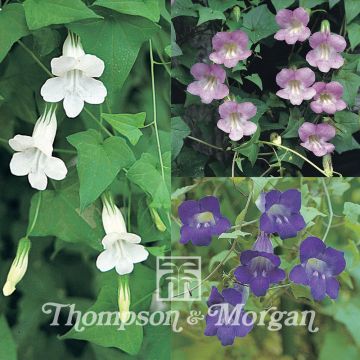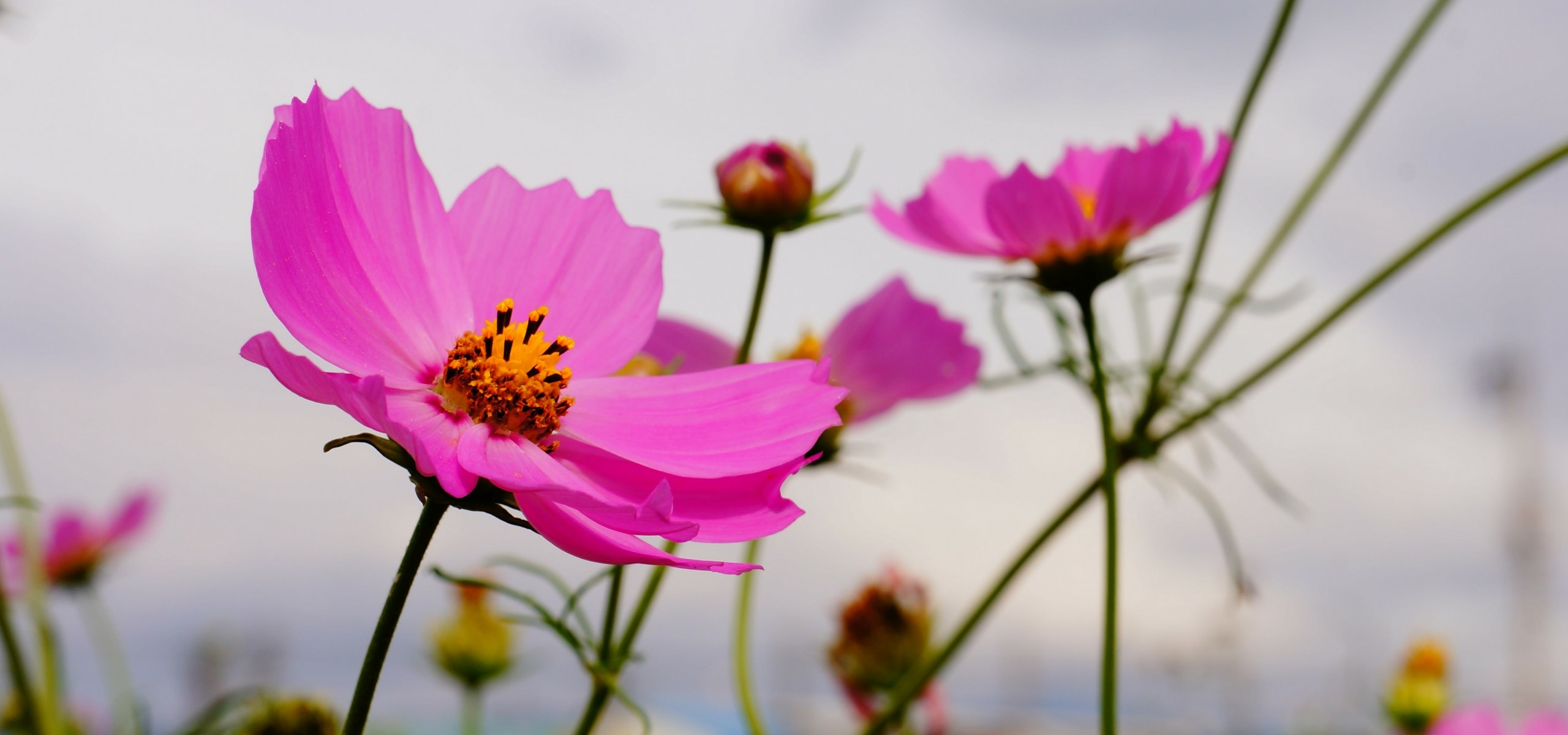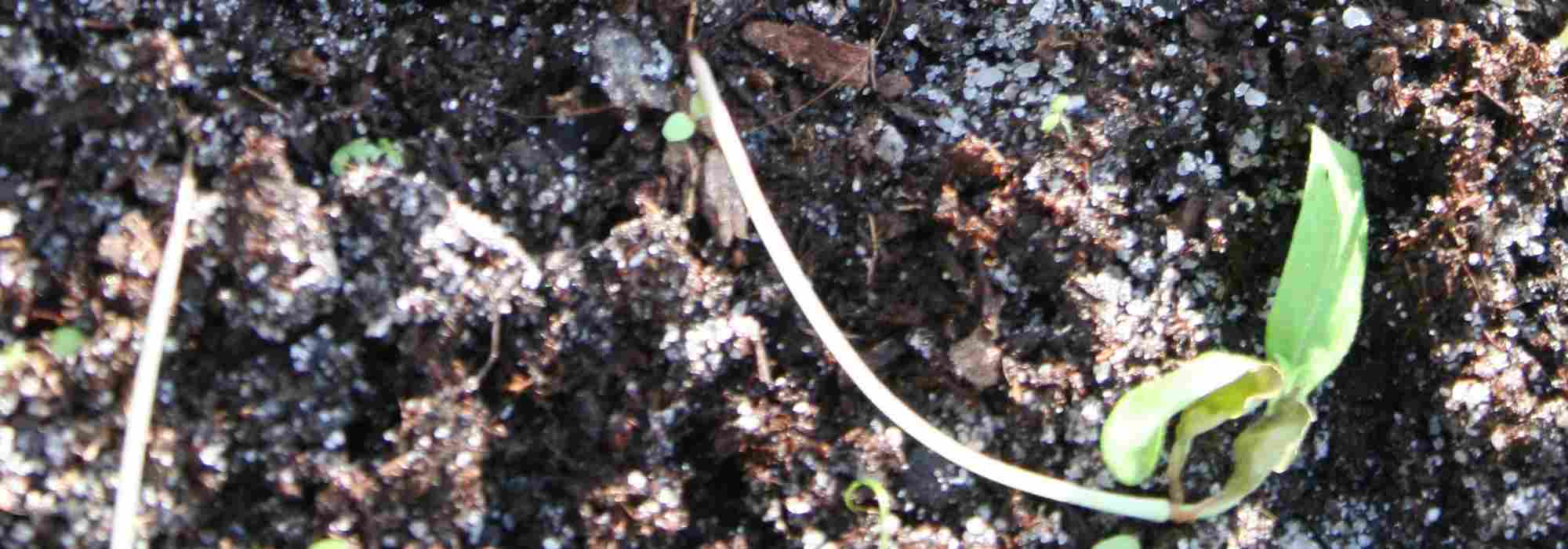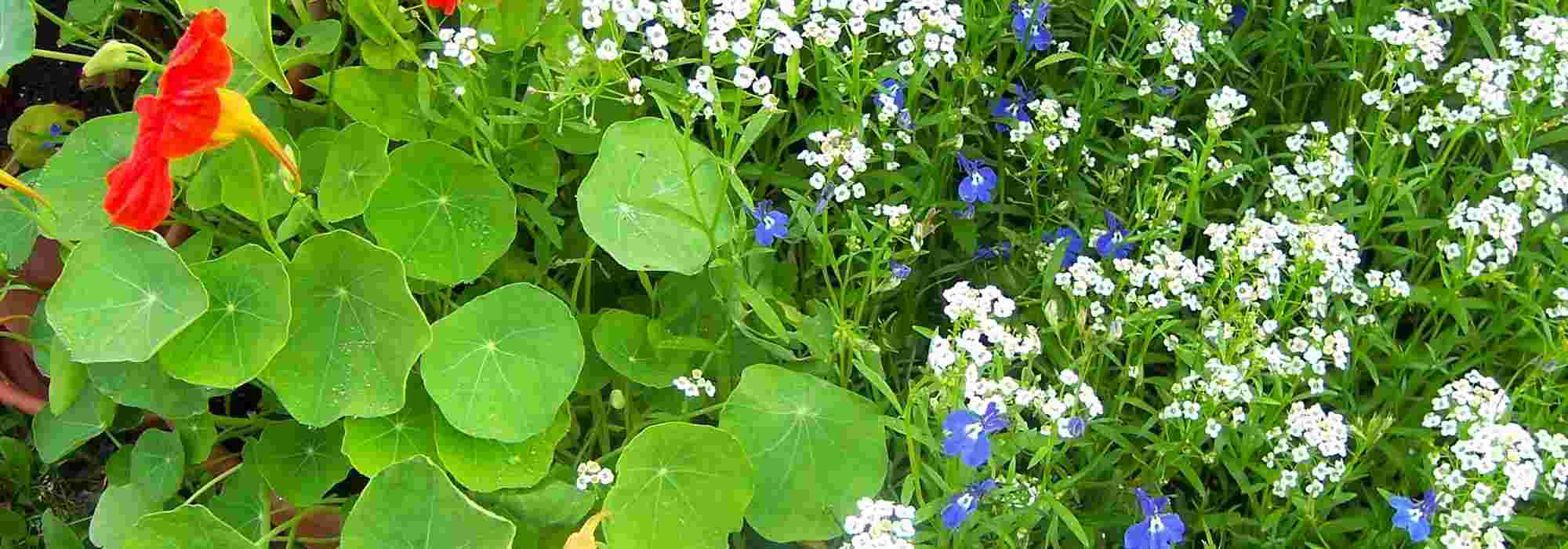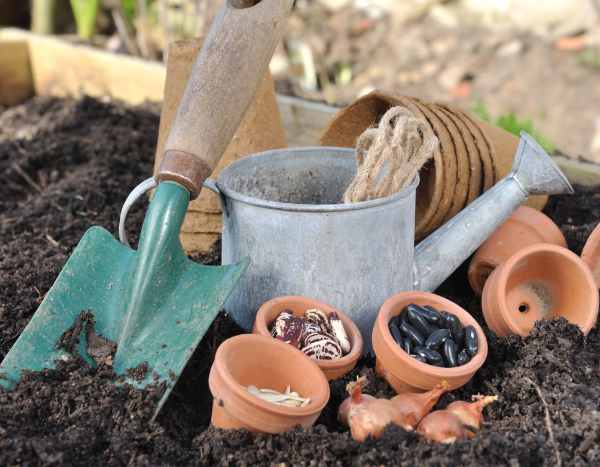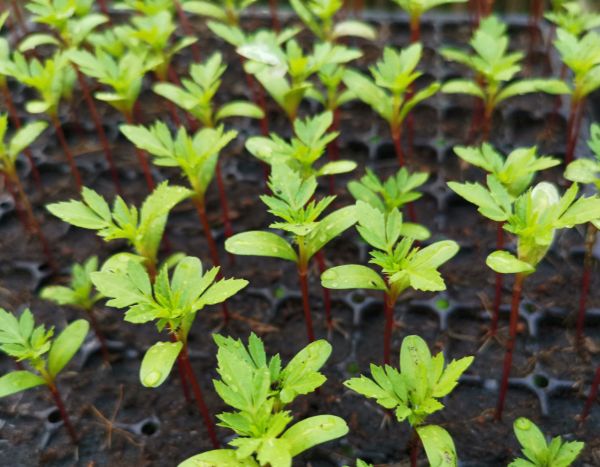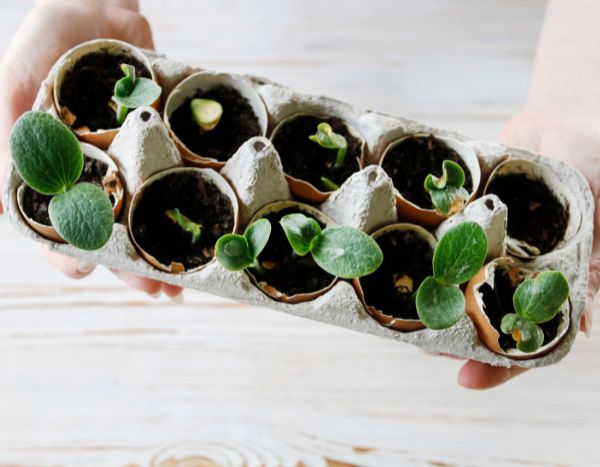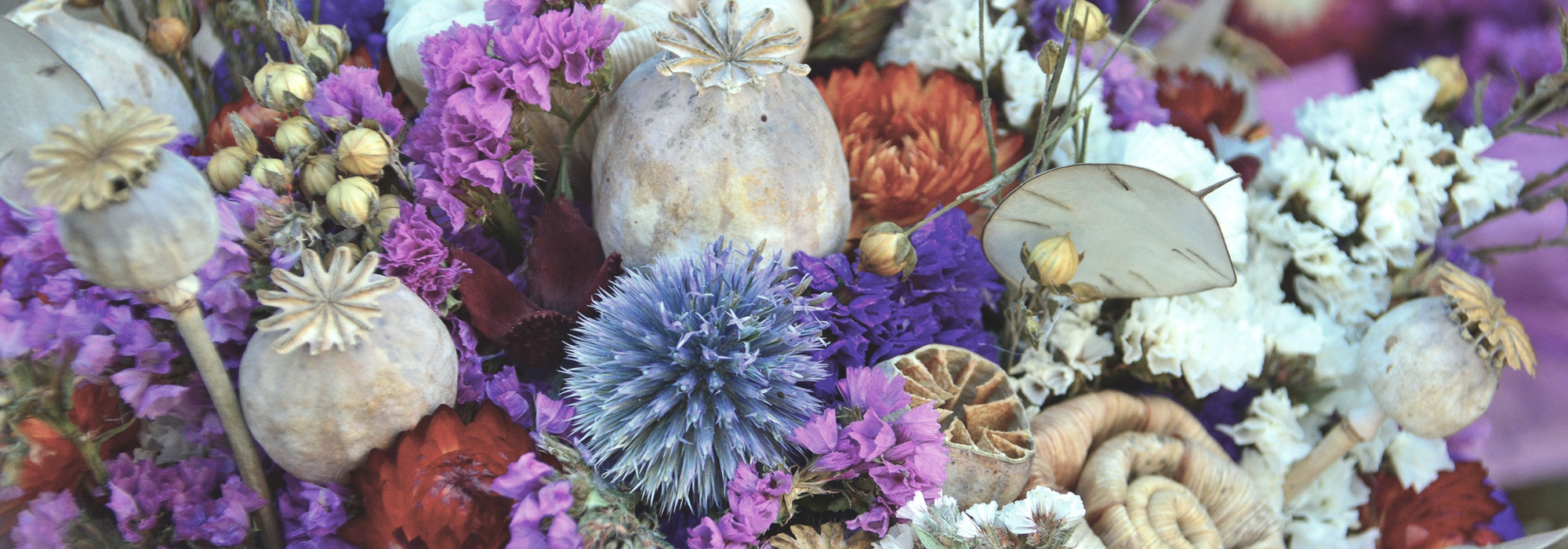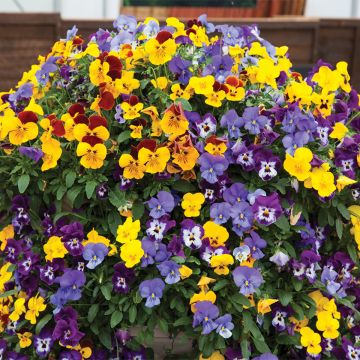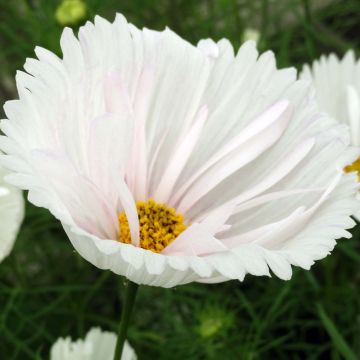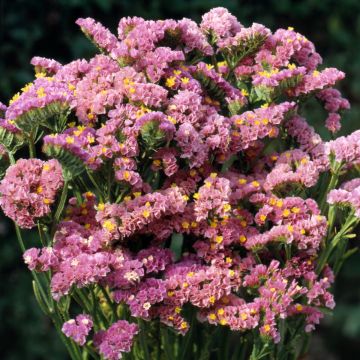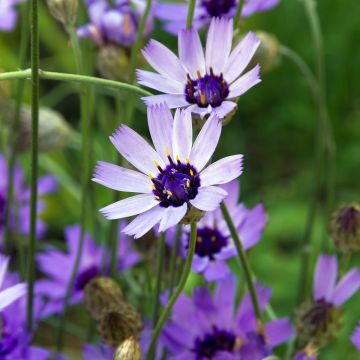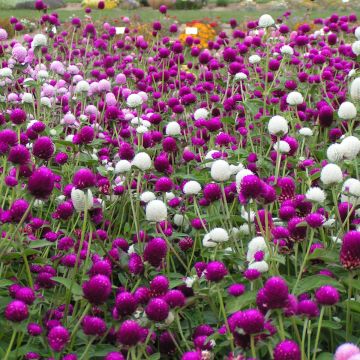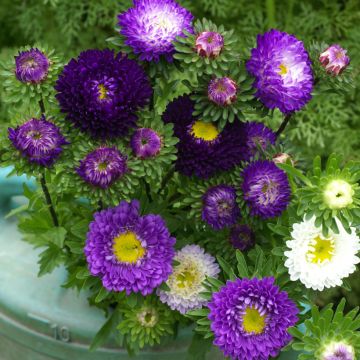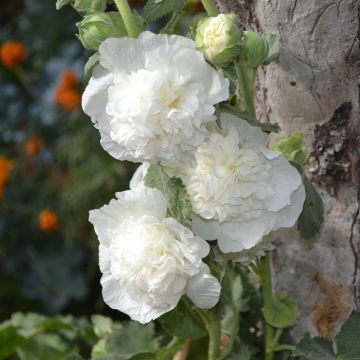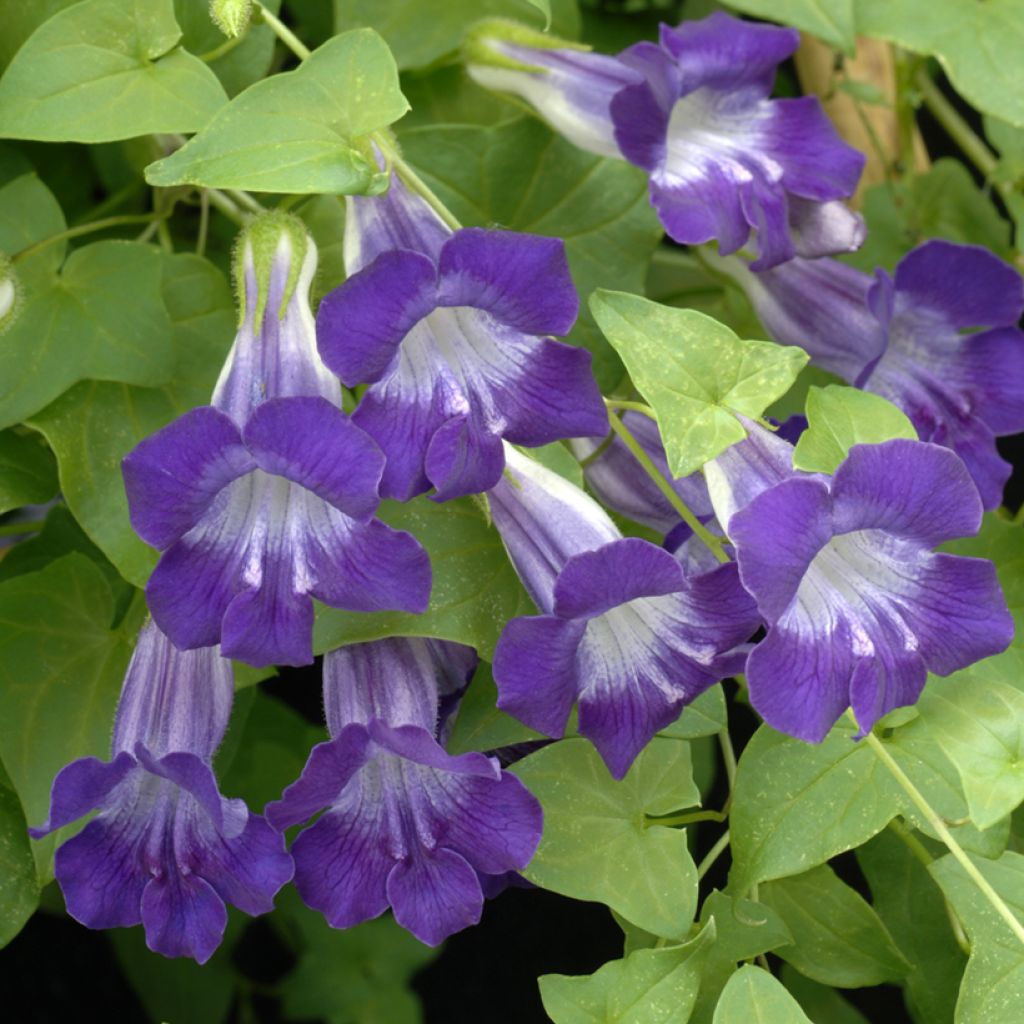

Asarina scandens Joan Lorraine seeds - Climbing Snapdragon
Asarina scandens Joan Lorraine seeds - Climbing Snapdragon
Asarina scandens Joan Lorraine
Climbing Snapdragon, Twining Snapdragon, Trailing Snapdragon
Special offer!
Receive a €20 voucher for any order over €90 (excluding delivery costs, credit notes, and plastic-free options)!
1- Add your favorite plants to your cart.
2- Once you have reached €90, confirm your order (you can even choose the delivery date!).
3- As soon as your order is shipped, you will receive an email containing your voucher code, valid for 3 months (90 days).
Your voucher is unique and can only be used once, for any order with a minimum value of €20, excluding delivery costs.
Can be combined with other current offers, non-divisible and non-refundable.
Home or relay delivery (depending on size and destination)
Schedule delivery date,
and select date in basket
This plant carries a 6 months recovery warranty
More information
We guarantee the quality of our plants for a full growing cycle, and will replace at our expense any plant that fails to recover under normal climatic and planting conditions.
Would this plant suit my garden?
Set up your Plantfit profile →
Description
Asarina scandens 'Joan Lorraine' is a beautiful vigorous selection of climbing asarine with dark blue-violet flowers. It is a tender perennial often grown as an annual for seasonal decoration in the garden or on the terrace. It wraps its stems, adorned with light green leaves, around its support and blooms from summer until the first frosts. Sheltered from the cold, this plant can flower almost all winter.
Asarina scandens 'Joan Lorraine' is a horticultural selection by Sahin dating back to 1990. The type species, now called Lophospermum scandens, is a climbing perennial plant native to Central America, including Mexico. This plant belongs to the plantain family, like snapdragons. The 'Joan Lorraine' variety is a climber reaching a height of 3.50 m in one season. The flexible, purplish stems are adorned with rectangular, bright, acid-green, shiny, trilobed leaves. They persist throughout the year if the plant is kept in a greenhouse or conservatory in winter. Flowering begins in July and continues as long as it does not freeze. If the plant is overwintered frost-free, it will continue to bloom. The tubular flowers bloom at the end of the stems. They are trumpet-shaped with 5 tapered lobes. The outside of the corolla is slightly hairy. The fruits are capsules containing several seeds that germinate easily.
Climbing Asarinas are ideal plants for slightly heated conservatories. Outdoors, they climb in one season on shrubs or small trees, as well as on fences and trellises. Like morning glories, they can also be cascaded from hanging baskets or allowed to run in moist rockeries or over low walls. The key is to provide them with warmth, non-scorching sun, and consistently moist soil. Among the varieties that combine particularly well with Asarina scandens 'Joan Lorraine', you will find the Lophos rose. The 'Taiga' clematis, another small climber with extended flowering, can also be an excellent companion.
Attention, seeds reserved for experienced gardeners accustomed to sowing very fine seeds. These seeds are as fine as dust, barely visible to the naked eye.
Report an error about the product description
Flowering
Foliage
Plant habit
Botanical data
Asarina
scandens
Joan Lorraine
Plantaginaceae
Climbing Snapdragon, Twining Snapdragon, Trailing Snapdragon
Lophospermum scandens
Cultivar or hybrid
Other Asarina seeds
View all →Planting and care
Sow asarina scandens 'Joan Lorraine' from early February to mid-April in a good soil barely covering the seeds with a thin layer of compost or vermiculite. Germination takes 14 to 21 days at 20-24°C. Enclose the sowing in a polythene bag and keep in the light. Transplant the seedlings into 7.5 cm pots and let them grow in cooler conditions.
Once well rooted, plant them in baskets or containers, in a rich, light substrate with added vermiculite. Keep them in a shaded greenhouse for 2 weeks and then gradually acclimatise them to outdoor conditions for 10-15 days before placing them outside, after all risk of frost, in a sunny and sheltered spot.
Cultivation: Water and feed the plants once a week during the summer. To overwinter, move them indoors to a cool, bright location from autumn and keep the soil just moist. On the windowsill, you can grow these plants in 13 cm pots.
Sowing period
Intended location
Planting & care advice
This item has not been reviewed yet - be the first to leave a review about it.
Similar products
Haven't found what you were looking for?
Hardiness is the lowest winter temperature a plant can endure without suffering serious damage or even dying. However, hardiness is affected by location (a sheltered area, such as a patio), protection (winter cover) and soil type (hardiness is improved by well-drained soil).

Photo Sharing Terms & Conditions
In order to encourage gardeners to interact and share their experiences, Promesse de fleurs offers various media enabling content to be uploaded onto its Site - in particular via the ‘Photo sharing’ module.
The User agrees to refrain from:
- Posting any content that is illegal, prejudicial, insulting, racist, inciteful to hatred, revisionist, contrary to public decency, that infringes on privacy or on the privacy rights of third parties, in particular the publicity rights of persons and goods, intellectual property rights, or the right to privacy.
- Submitting content on behalf of a third party;
- Impersonate the identity of a third party and/or publish any personal information about a third party;
In general, the User undertakes to refrain from any unethical behaviour.
All Content (in particular text, comments, files, images, photos, videos, creative works, etc.), which may be subject to property or intellectual property rights, image or other private rights, shall remain the property of the User, subject to the limited rights granted by the terms of the licence granted by Promesse de fleurs as stated below. Users are at liberty to publish or not to publish such Content on the Site, notably via the ‘Photo Sharing’ facility, and accept that this Content shall be made public and freely accessible, notably on the Internet.
Users further acknowledge, undertake to have ,and guarantee that they hold all necessary rights and permissions to publish such material on the Site, in particular with regard to the legislation in force pertaining to any privacy, property, intellectual property, image, or contractual rights, or rights of any other nature. By publishing such Content on the Site, Users acknowledge accepting full liability as publishers of the Content within the meaning of the law, and grant Promesse de fleurs, free of charge, an inclusive, worldwide licence for the said Content for the entire duration of its publication, including all reproduction, representation, up/downloading, displaying, performing, transmission, and storage rights.
Users also grant permission for their name to be linked to the Content and accept that this link may not always be made available.
By engaging in posting material, Users consent to their Content becoming automatically accessible on the Internet, in particular on other sites and/or blogs and/or web pages of the Promesse de fleurs site, including in particular social pages and the Promesse de fleurs catalogue.
Users may secure the removal of entrusted content free of charge by issuing a simple request via our contact form.
The flowering period indicated on our website applies to countries and regions located in USDA zone 8 (France, the United Kingdom, Ireland, the Netherlands, etc.)
It will vary according to where you live:
- In zones 9 to 10 (Italy, Spain, Greece, etc.), flowering will occur about 2 to 4 weeks earlier.
- In zones 6 to 7 (Germany, Poland, Slovenia, and lower mountainous regions), flowering will be delayed by 2 to 3 weeks.
- In zone 5 (Central Europe, Scandinavia), blooming will be delayed by 3 to 5 weeks.
In temperate climates, pruning of spring-flowering shrubs (forsythia, spireas, etc.) should be done just after flowering.
Pruning of summer-flowering shrubs (Indian Lilac, Perovskia, etc.) can be done in winter or spring.
In cold regions as well as with frost-sensitive plants, avoid pruning too early when severe frosts may still occur.
The planting period indicated on our website applies to countries and regions located in USDA zone 8 (France, United Kingdom, Ireland, Netherlands).
It will vary according to where you live:
- In Mediterranean zones (Marseille, Madrid, Milan, etc.), autumn and winter are the best planting periods.
- In continental zones (Strasbourg, Munich, Vienna, etc.), delay planting by 2 to 3 weeks in spring and bring it forward by 2 to 4 weeks in autumn.
- In mountainous regions (the Alps, Pyrenees, Carpathians, etc.), it is best to plant in late spring (May-June) or late summer (August-September).
The harvesting period indicated on our website applies to countries and regions in USDA zone 8 (France, England, Ireland, the Netherlands).
In colder areas (Scandinavia, Poland, Austria...) fruit and vegetable harvests are likely to be delayed by 3-4 weeks.
In warmer areas (Italy, Spain, Greece, etc.), harvesting will probably take place earlier, depending on weather conditions.
The sowing periods indicated on our website apply to countries and regions within USDA Zone 8 (France, UK, Ireland, Netherlands).
In colder areas (Scandinavia, Poland, Austria...), delay any outdoor sowing by 3-4 weeks, or sow under glass.
In warmer climes (Italy, Spain, Greece, etc.), bring outdoor sowing forward by a few weeks.






























